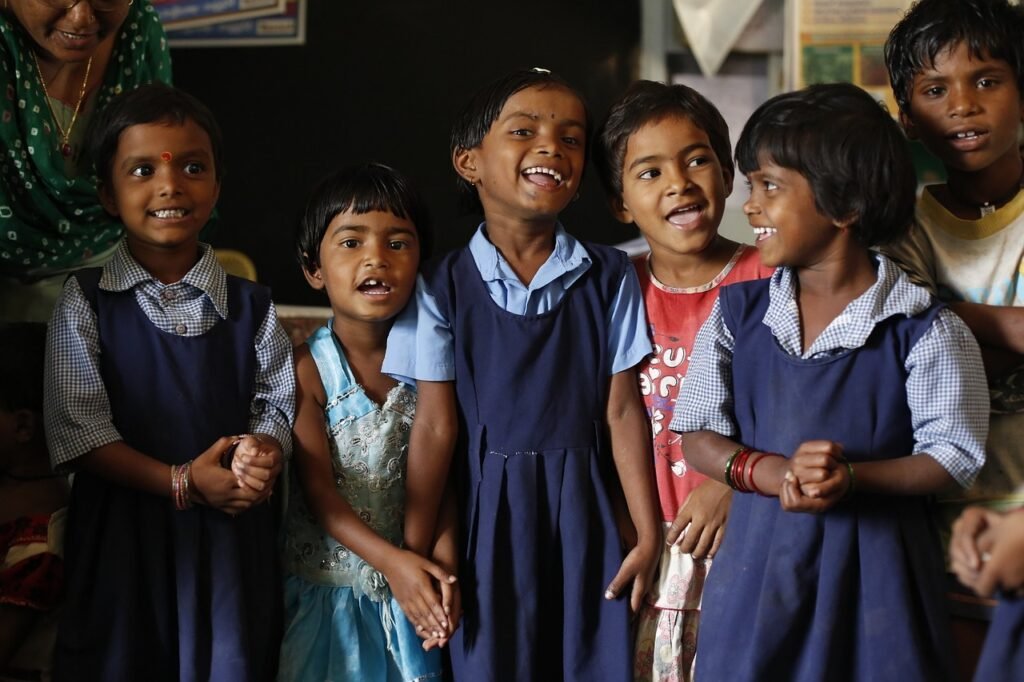About Us
At Sathiya Nidhi Trust, we welcome dedicated volunteers who are passionate about making a difference in the lives of underprivileged communities. Volunteering with us offers the Opportunity to contribute your skills and time to meaningful causes in education, healthcare, and human development.


.
Sathiya Nidhi Trust was founded by a group of like-minded individuals from diverse backgrounds, united by a shared, vision and dedication. Driven by a common purpose, they aimed to make a tangible difference.
In 2010, a chance meeting brought together a diverse group of professionals—educators, social workers, and entrepreneurs—each with a passion for social change. Over countless discussions and brainstorming sessions, they realized that despite their different professions, they shared a common goal: to address the pressing needs of the disadvantaged and create lasting, positive change in their communities.
Their journey began with a series of exploratory visits to rural and underserved areas of Tamil Nadu. They spoke with families, listened to their stories, and identified the critical issues they faced. It became clear that the challenges were multi-faceted, encompassing education, healthcare, and livelihoods. The founders knew that to make a significant impact, their approach needed to be holistic, addressing all these interconnected areas.
With a clear vision in mind, they pooled their resources, both financial and intellectual, and officially established Sathiya Nidhi Trust in xxxx. Their mission was simple yet profound: to empower underprivileged communities through comprehensive education, medical support, and sustainable livelihood initiatives.


From the outset, Sathiya Nidhi Trust focused on building bridges with local communities, understanding that true empowerment comes from within. They began by improving educational infrastructure, providing essential resources, and supporting higher education and vocational training. Simultaneously, they set up medical support systems, conducted health camps, and launched preventive healthcare initiatives.
Recognizing the importance of economic stability, the founders introduced various livelihood programs. These included vocational training, micro-enterprise development, and agricultural support, particularly aimed at empowering women. By creating opportunities for income generation, they helped individuals and families achieve financial independence and improve their quality of life.
Over the years, Sathiya Nidhi Trust has grown, both in reach and impact. Since then, the trust has impacted lives of over xxxx people in need. What started as a small initiative by a group of dedicated individuals has blossomed into a trusted organization making a significant difference in countless lives. The founders’ commitment to their mission remains unwavering, and their collective effort continues to drive the trust forward.
Mission
To empower underprivileged communities in Tamil Nadu through education, healthcare, and livelihood initiatives, fostering sustainable development and equitable opportunities for all.
Vision
- Comprehensive Education: Provide accessible and quality education to underprivileged communities through capacity building, career guidance & scholarships, equipping them with knowledge and skills for personal and community development.
- Accessible Healthcare: Ensure access to essential healthcare services, promoting well-being through medical aid/financial assistance and reducing health disparities among marginalized groups.
- Livelihood Initiatives: Implement sustainable livelihood programs to enhance economic stability and empower individuals to become self-sufficient.
Key Focus Areas
These focus areas are currently addressing the holistic needs of underprivileged communities in Tamil Nadu, encompassing education, healthcare, and sustainable livelihoods to foster long-term development and equitable opportunities.
- Comprehensive Education: – Enhancing educational infrastructure and resources to improve learning outcomes.
– Providing counselling and financial support to facilitate access to higher education and vocational training.
– Offering practical skills training aligned with local economic opportunities to foster employment readiness and entrepreneurship. - Medical Support: – Establishing support systems for medical treatments, including subsidies or grants for healthcare expenses.
– Conducting outreach initiatives to educate communities about preventive healthcare practices and disease management.
– Conducting Medical camps in underserved areas to ensure equitable access to healthcare services. - Livelihood Initiatives: – Introducing initiatives such as vocational training, micro-enterprise development, and agricultural support to enhance income generation capabilities for women.
Get Involved with Sathiya Nidhi Trust
Comprehensive Education
– Literacy Rates: According to the National Statistical Office (NSO), the literacy rate in India was around 77.7% in 2021, with Tamil Nadu having a slightly higher rate of approximately 80.09%. However, there are significant disparities in literacy rates between urban and rural areas.
– School Dropout Rates: Despite progress, dropout rates remain a concern, particularly in secondary education. The Ministry of Education reported that the dropout rate at the secondary level was 17.06% in 2018-19.
– Higher Education: The Gross Enrolment Ratio (GER) in higher education in India was 27.1% in 2019-20, indicating that a significant portion of the population still lacks access to higher education.

Medical Support
– Healthcare Access: According to the World Bank, India had 0.9 physicians per 1,000 people in 2017, highlighting a significant shortage of medical professionals.
– Healthcare Expenditure: India’s public expenditure on healthcare is around 1.2% of GDP, one of the lowest among major economies, according to the Economic Survey 2019-20.
– Preventive Healthcare: The National Health Profile 2019 reports a high burden of communicable and non-communicable diseases, emphasizing the need for improved preventive healthcare measures.

Sustainable Livelihoods
– Unemployment Rates: The unemployment rate in India was reported to be around 6.1% in 2017-18, the highest in 45 years, according to the Periodic Labour Force Survey (PLFS).
– Female Workforce Participation: Female labor force participation in India is low, standing at approximately 20.3% in 2019-20, as per the PLFS.
– Agricultural Dependence: Over 50% of India’s workforce is engaged in agriculture, yet it contributes only about 17-18% to the GDP, indicating low productivity and income levels.

